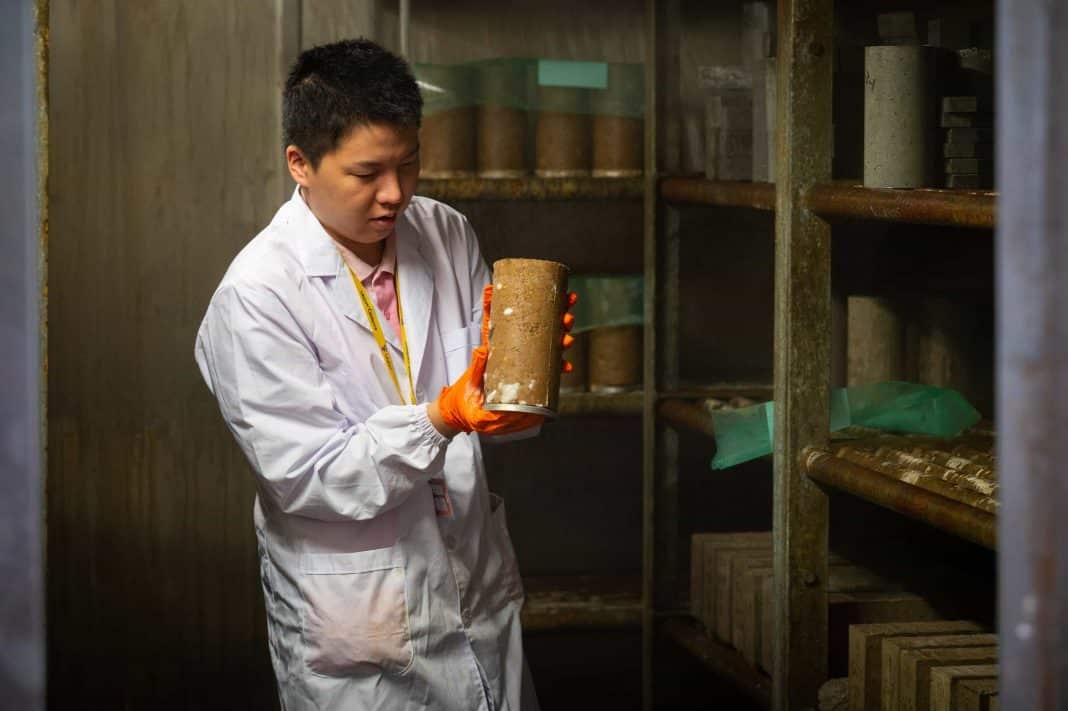Plans for Canberra’s new Dairy Road housing project include reusing displaced soil, which would usually be trucked away, to make rammed earth walls and columns to form part of the residential buildings on the precinct.
Ground-breaking research by UNSW Canberra into the use of rammed earth in building construction is helping with the Dairy Road development, which is set to be Canberra’s most environmentally-friendly residential neighbourhood.
Rammed earth is a construction technique that can be used to build load-bearing walls and columns by compacting local soil mixtures into forms.
The new Dairy Road precinct is being developed by Molonglo and the long-term vision for the site is for an interconnected neighbourhood where many often-separated parts work together. Across the 14-hectare site, light industry, working, living, recreation, retail and entertainment will take place on a restored landscape.
Molonglo commissioned David Chipperfield Architects to design the residential neighbourhood, which will include 12 slender buildings, ranging in height from three to four storeys, and which will be arranged around a new wetlands ecosystem. The architecture will be a framework for ecology, with gardens occupying spaces between buildings, extending down into basements and up vertically into private dwellings.
The Dairy Road project’s engineering partner, Indesco will pioneer regenerative construction processes, using existing resources from the site in the development of the buildings and landscape.
This means that the displaced soil from the site – which would usually be trucked away – will be reused to make rammed earth walls and columns that will then form part of the residential buildings on the precinct.
As part of the research project, UNSW Canberra researchers will conduct extensive testing to understand the structural capacity, cost effectiveness and material reduction potential of using lime or other stabilisers in rammed earth blocks rather than using cement, which is a much less carbon-friendly option.
A key outcome of the research will be to find the most efficient way to determine an optimum option for stabilised rammed earth given that the properties of soil will vary on any building site.
The UNSW Canberra research team will develop a suitable testing method for determining the strength of rammed earth structures, as well as developing a mathematical model for calculating the bearing capacity (i.e. how much weight it can hold safely) of rammed earth walls and columns.
UNSW’s Lead Researcher on the project, Dr Jianfeng Xue said the rammed earth technique has gained increasing popularity over recent years because of its economic and environmental benefits.
“The adoption of on-site soil in rammed earth structures significantly reduces the disposal of waste soils produced from site excavation and the use of imported materials for the construction of new structures. A really positive outcome of using rammed earth in buildings is that it reduces environmental impacts and greenhouse gas emissions,” Dr Xue said.
“The outcomes of this project will provide a greater understanding of stabilised rammed earth material, which will hopefully see this method of construction gain traction. It will also hopefully lead to a reduction in the amount of cement being used as a stabiliser, along with a reduction in construction costs.”
Aaron Hazelton, Indesco’s Director, said his engineering consulting company has seen an increased interest in the use of rammed earth in medium-rise buildings.
“This research and collaboration being done by UNSW Canberra is really important because it will help us provide more reliable and environmentally friendly rammed earth structures,” Mr Hazelton said.
“The engineering industry needs more efficient testing methods and reliable mathematical models to determine the required design parameters for rammed earth structures, so we are excited to partner with UNSW Canberra on this project and help drive the industry forward.”
The research project has been enabled through funding from the Federal Government’s Innovation Connections program.
Canberra Daily is keen to hear from you about a story idea in the Canberra and surrounding region. Click here to submit a news tip.



